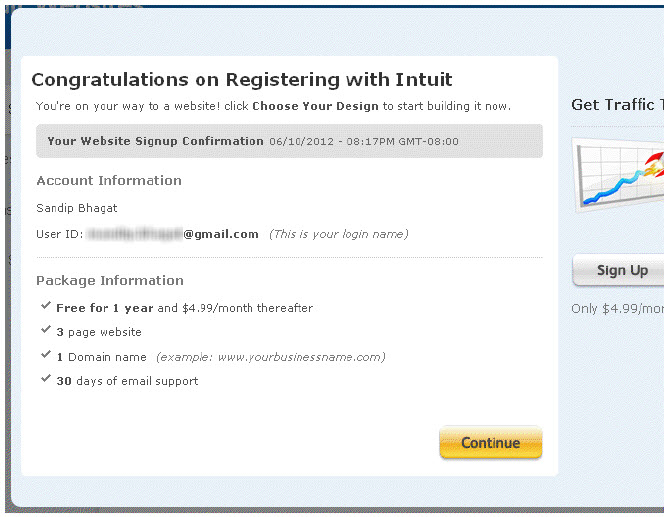9 Basic On Page Blogspot SEO Tips For bloggers Blogs - Tribeams
Search Engine Optimization (SEO) is the most important thing to learn for best blogging experience. Without proper blog optimization, we can’t even dream to get impressive traffic from search engines. From past few days, I am getting too much request of newbie bloggers to share some On-Page SEO Tips. That’s why today I plan to mention all those On Page SEO tips which I already shared on my blog in my earlier posts. I’m sorry if you have read those posts before, but I need to grab attention of newbie bloggers who just start learning SEO for their blog. All those tips are must to know by every blogger.
So, let’s take a look on best On-page SEO Tips for Blogspot Blogs and if you have read them before then don’t ignore this post. May be you learn something new which you missed before because of any reason.
BlogSpot SEO: Useful Tips and Tricks
When we talk about SEO, very first thing which you need to keep in mind is: We can control on site and off site SEO. On Page SEO is covered by you which includes article quality, how well it’s optimized for Keyword and meta value for that article. No need, to feel furious or lost with above SEO terminology, as below mentioned guide will help you to learn every basic and make your Blogger blog more search engine friendly.
- Keyword research for Beginners
- OnPage optimization for every Blogger
- Submit Blogger Sitemap To Google Webmaster Tools
#1 Format Blogger post URL link
Permalink plays a great role in search engine ranking of your post. There are few rules which everyone should follow for Blogspot permalinks:
- Keep the number of characters in post title to 50
- Remove Stop words from permalink (Ex: A, an, the)
While writing a blog post, you have an option to edit the permalink. Simply use it to edit your permalink and remove the stop words. A good idea is just to use Keywords in your permalink. (Don’t make it look spammy). While writing the blog post, you get the option in your right panel to keep it automatic permalink or manual permalink. Simply select manual permalink and edit it according to your wish. Check this screenshot for example:
#2 Maintain the keyword density
Keyword density is an important aspect for better ranking. Too less will lead to less ranking and stuffing your Keyword will lead to over optimization. I usually maintain a ratio of 2%/post. Though, you can pick keyword density for your Blogpost SEO, account to one which works for you. Publish articles in relevance to post title and include necessary keywords in the post. Never stuff keywords to manipulate search engines. But after finish you can analyze the whole post to find out suitable locations where the keywords can be safely inserted without distracting readers .
Read: What is optimum Keyword density for Better ranking
#3 Blogspot proper labels and related posts
Label adds to the keyword density of the post. Labels should be widened rather than putting them into the single narrow category.I will explain this point by an example. Consider a situation when you are posting about Google chrome and putting them into label Windows software’s or browser. Here you will miss keywords like Chrome browser, Google chrome, etc. which would otherwise add to the keyword density of the whole post. Labels also affect related posts widgets in Blogger.And if there are so many posts tagged with similar labels , it would affect the arrangement of articles in related posts.
#4 Format Blogger post title
When we talk about BlogSpot SEO, post title plays a major role. Blogger post title is usually followed by home page title. Have a look at the image shown below.
Here the post title should be “city of (long-distance ) Love! “. But the title is included in the home page title ” Still in Berlin “, and this would harm the SEO friendliness of the article title. Here is how to fix this. Go to Blogger edit HTML > find out code section
<title><data:blog.pagetitle/></title>
and replace it with
<b:if cond= 'data:blog.pageType == "index"'>
<title><data:blog.title/></title>
<b:else/>
<title><data:blog.pageName/></title>
</b:if>
#5 Format Blogspot images for SEO
We have already shared a detailed article on Image optimization for SEO and basis of optimization your image on BlogSpot is by adding alt tag and title tags in every image. In WordPress, this could be easily achieved by using plugins but in BlogSpot this needs be done manually. You should insert them manually after uploading each image. Here is a guide for Image optimization for SEO.
#6 Provide meta tags
Meta tags are generated HTML tags used by search engines to identify the title, description, and other details of a URL. They don’t have much influence on search as they were before, but would make a slight impact on targeted keywords.
#7 Provide good title, description, and footer text
Title, footer, and description plays an important role in search engine optimization of every blog. If you are targeting, some keywords make sure that you included those keywords in the above-mentioned locations.
#8 Nofollow external links
Nofollow is an HTML attribute specified on hyperlinks to block search engine advantage of external links in a website. In Blogger, you can select HTML section of the post window and add rel=”nofollow” attribute just after URL to prevent search engines from crawling a particular link. Also read: How to add nofollow link attribute to any link
#9 Format comment section
The Comment section should be no-followed and moderated to avoid spam comments. Try to include the post keywords when you are replying to reader comments. This would also add up to the total keyword density of the post. Since Google have integrated Google plus comment form with BlogSpot, I highly recommend you to enable it. This will ensure that you get higher social media interaction and share for your post.
Blogspot is Google’s baby blogging platform and if you do it right probably you will be doing great in terms of traffic. Always get your basic right.
If you like this article, don’t forget to tweet and stumble. Further you might like to read Following articles for Blogspot blogs:
I hope this guide will give you much better idea about BlogSpot SEO, though my suggestion would be when you think you are ready with Blogging and had enough experience on BlogSpot..!!



































